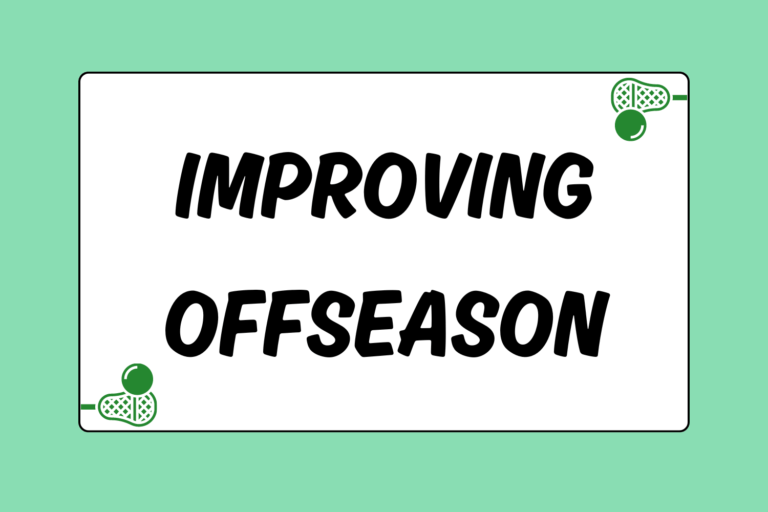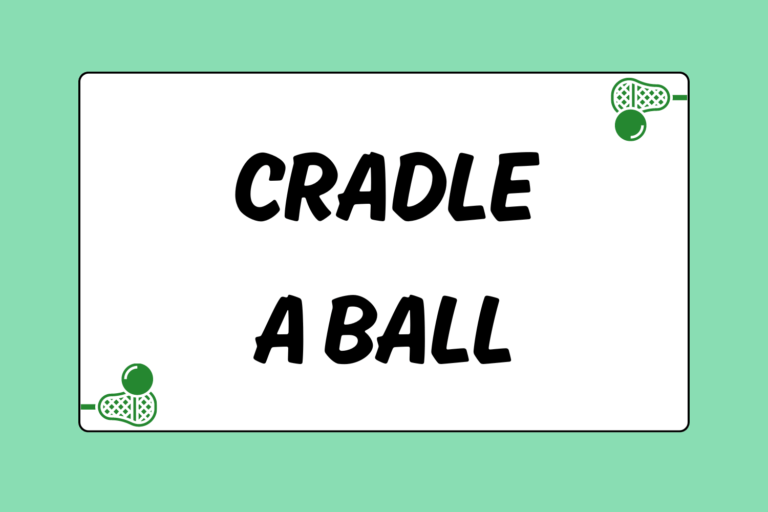Helping kids grow from boys to men. That’s the goal when working with the little guys. Coaching youth lacrosse can be a very gratifying thing, provided you have patience and a good (or childish) sense of humor. A huge part of helping kids develop into top flight players at the high school and college levels is instilling good fundamental skill sets at the lower levels of play. This guide will take a look at the how-to’s of some basic and fun skill building drills for young players. As a coach, you should place a big emphasis on having your players practice with intensity. Try to run drills that are directly applicable to game situations that players will encounter frequently. Be sure to explain the concept and objective of the drill to the players, and how it will be applied in the games before teaching the technique and actually running the drill.
Diamond Passing Drill
The diamond passing drill is great for teaching players how to move and cut when throwing or catching a pass. Standing still while throwing or catching is a cardinal sin in lacrosse. Players should be taught at an early age to move to the ball as well as toward the person to whom they are throwing.
Here’s how the drill works:
Four lines of players stand in a diamond formation, each line 12 yards away from a cone in the center of the diamond. The ball can start in any line, and the first player with the ball throws it with his right hand to the first player in the adjacent line to his right.
The player receiving the ball should V-cut, moving inward towards the cone and then back to the outside to receive the pass left-handed, with the stick on the outside. Once he has caught the ball, he will switch the stick to his right hand and move towards the player in the adjacent line to the right, throwing him a pass to the outside (which he will catch left-handed).
The process is repeated a few times around the four lines, with players following their pass and moving to the next line. Once every player has gotten 3-4 chances to do this, the ball rotation is reversed so that players can practice throwing and catching with the opposite hands.
This drill is designed to have players understand the V-cut and how to receive the ball on the perimeter while being closely guarded. It also teaches the passer how to time his throw so that the man cutting will receive the ball in a good spot.
The West Jenny Drill
Named for legendary lacrosse power West Genesee High School in upstate New York, this fast-paced drill is all about transition, finishing around the goal, and quick decision-making. Always a favorite for players of any age, you’ll find this one being utilized at practices everywhere. It’s a very simple drill, and players get very competitive, which leads to some spirited contests in practice.
To begin, the team is split into two groups, with one goalie and equal numbers at every position in each individual group. Goals are placed about 40 yards apart, and each team forms three lines of players about five yards apart along the new GLE’s (goal lines extended) created by moving the goals closer together. Each cage should be stocked with balls so that the goalie can quickly snag one and get the action started.
Here’s how the drill works:
• One team sends the first player in each line (three total players) running down towards the other team’s goal, with the middle player carrying a ball.
• The defending team sends two players out to play defense against the three offensive players.
• When a goal is scored or the ball hits the ground on a missed pass, shot, or otherwise, the last offensive player to touch the ball drops out of the play.
• The remaining two offensive players run back towards their own goal and become defenders.
• The previously defending goalie should pick a ball up from the cage and hit his teammate from the middle line with a quick up-field pass as the three new offensive players break towards the opposite goal to repeat the whole process.
A coach should be standing watch with a whistle, blowing the whistle when a goal is scored or a play is deemed dead, indicating to the players that the action should continue in towards the opposite side. The idea is to get the action moving back and forth very quickly, to the point where players are comfortable quickly changing from offense to defense. Have the teams play a game to ten points, with the losing team doing a little extra conditioning afterwards to get the players going hard and competing. The drill emphasizes good stick work around the cage, transition play, and man-down defensive principles.
Mental Edge
Don’t get frustrated or angry when kids aren’t able to execute a fast-paced or challenging drill the first few times you try to run it. If you’re seeing common mistakes, take a little time-out and walk through the proper execution of the drill. Try your best to emphasize the positives, and don’t slack on offering encouragement to those who may be struggling to keep pace with the rest of the team. Kids need patience, not scolding, when learning new skills.
Goalie on the Wall Drill
Goalies need very specific training, the type that often does not allow you to involve other players in a training drill. One such drill can be done while the rest of the team is hitting the wall or working on stick skills. All you need is a tennis ball and a wall at least six feet high.
Here’s how the drill works:
Have your goalie face the wall, standing about 6-8 feet away from it. With you standing a few feet behind your goalie, and a little to the side, throw a tennis ball against the wall at varying angles so that it will bounce back towards the goalie. The goalie then locates the ball on the bounce, and steps toward it quickly to make a simulated save. Throwing the ball off the wall at different angles allows the goalie to get comfortable with different types of shots. This drill is designed to be done with the goalie only needing his gloves and stick, as the tennis ball won’t do any damage should it hit the kid.
This drill is intended to increase the goalie’s reaction time. Additionally, it should be done to improve the goalie’s footwork and hand speed to the ball.
Same Side Shooting Drill
A drill that can really get your goalie some good practice is the same side shooting drill. Gather your offensive players (middies and attack) and a goalie in the offensive zone, and have your goalie get ready to see some rips!
Here’s how the drill works:
• Attackmen form two lines, each five yards wide of the cage on GLE. Each line should have a pile of balls at their disposal.
• Midfielders form two lines about five yards inside the restraining line, one on each hash mark.
• A midfielder cuts towards the attack line on the same side of the goal as his midfield line. The attackman at the front of the line throws the midfielder a hard pass with his outside hand, which the midfielder should catch with his outside hand and then set his feet for a shot.
• Opposite line repeats the process.
The shooters should be instructed to aim for the low corner on the far pipe, the area left most open by the goalie in these shooting situations. Players should switch to the opposite lines for their respective positions once they have fed or shot.
The same side drill emphasizes good feeding for attackmen, and good shooting habits for midfielders. Emphasis should be placed on shooting hard low shots to the far pipe, and for attackmen to throw hard, accurate passes to the box area.
Sticking to the Basics
Don’t lose sight of the fact that teaching the kids the game has to be all about the fundamentals. Keep the drills simple and competitive, while placing an emphasis on proper fundamental skill development, and you’ll see after a couple of years that your boys will have turned into excellent lacrosse players at the higher levels! As the kids begin to improve over the course of the season, you can start to challenge them with some slightly more complex drills, and move forward from there.





